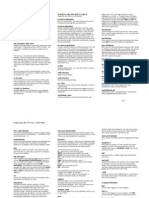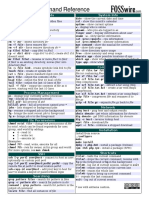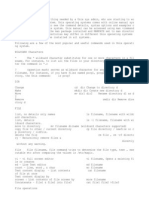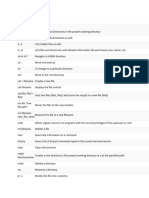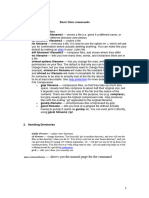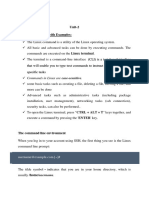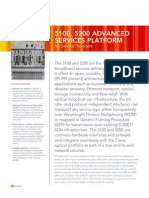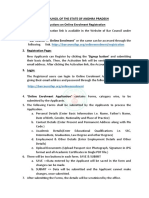0% found this document useful (0 votes)
11 views4 pagesUnix Commands
The document provides a comprehensive list of Unix commands along with their descriptions, including file management, process control, and user communication commands. It also covers permissions, searching files, and basic networking commands. Additionally, it explains how to check memory usage and the functionality of the grep command for pattern matching in files.
Uploaded by
sreejeevan4499Copyright
© © All Rights Reserved
We take content rights seriously. If you suspect this is your content, claim it here.
Available Formats
Download as DOCX, PDF, TXT or read online on Scribd
0% found this document useful (0 votes)
11 views4 pagesUnix Commands
The document provides a comprehensive list of Unix commands along with their descriptions, including file management, process control, and user communication commands. It also covers permissions, searching files, and basic networking commands. Additionally, it explains how to check memory usage and the functionality of the grep command for pattern matching in files.
Uploaded by
sreejeevan4499Copyright
© © All Rights Reserved
We take content rights seriously. If you suspect this is your content, claim it here.
Available Formats
Download as DOCX, PDF, TXT or read online on Scribd
/ 4




















